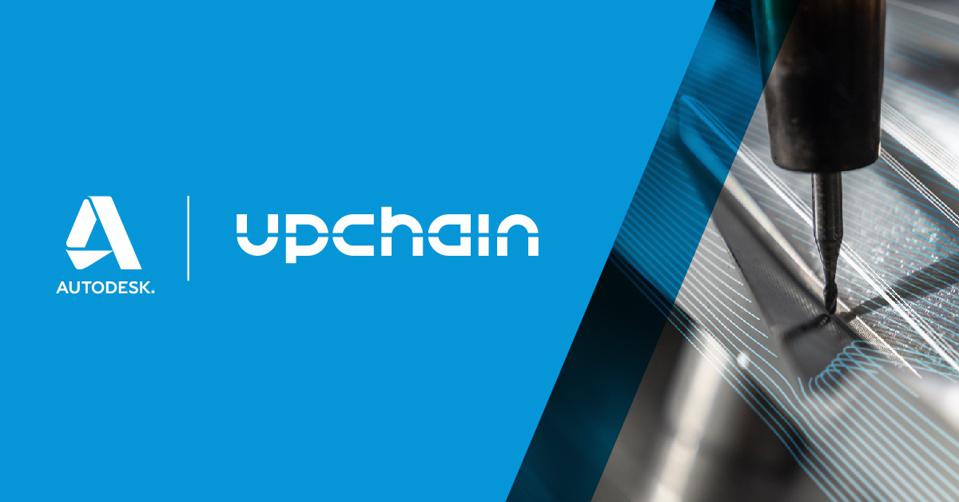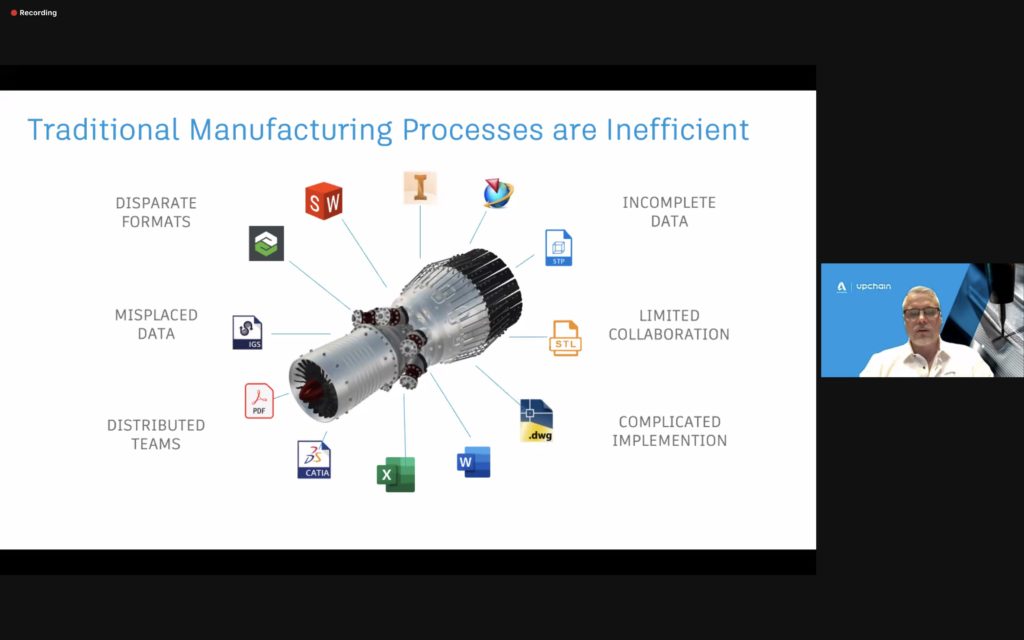
A very interesting PLM news came out yesterday. Autodesk signed an agreement to acquire Toronto-based Upchain. You can read some initial coverage of the event on TechCrunch and Forbes that covered the event. For Autodesk, it is a signal for activity in the manufacturing domain (remember for the last few years, Autodesk was very much active in AEC business M&As, but not in manufacturing). Great achievement to Upchain and to John Laslavic for his vision and execution behind Upchain. I was following Upchain development in recent years and it was an interesting journey.
The quote from Andrew Anagnost, Autodesk CEO, confirms that Autodesk is getting back to the PLM mantra of connecting silos together as a high-level vision.
Autodesk’s President and CEO, Andrew Anagnost, is particularly bullish about today’s announcement. “Upchain’s cloud-based PLM and PDM will unite the ecosystem of every type of app—ours and others’,” he said. “It will help break down the barriers between different disciplines. If you look at [Autodesk’s 3D design program,] Fusion, it’s a multi-disciplinary design environment, supporting CAD, CAM, CAE, and generative design and simulation that all work together seamlessly. Upchain allows us to extend that process end-to-end, where the user doesn’t even have to think about it and the data management piece becomes invisible.”
I especially liked Andrew’s “invisible data management” quote, which reminded me of one of the articles – Invisible Product Lifecycle Software.
For analysts who like some “interesting” data points, we can now say that Autodesk is “typically” acquiring PLM companies from Toronto every 10 years (the previous one was DataStay and it was acquired back in 2011). I hope you can hear the joke, after all – Happy Friday!
Let’s get back to the serious business. I was invited to attend Autodesk virtual presentation about Upchain acquisition and listened to Scott Reese (EVP Product Development and Manufacturing) , Derrek Cooper (VP Product Development and Manufacturing) and John Laslavic (CEO of Upchain) talking about Upchain and future vision of Autodesk in PLM.
Background about Upchain was presented

The roots of Upchain go back to Worx Inc and the software UpchainXLM later changed the name as Upchain. The vision of Upchain was to connect to complex products and complex value chains. UpchainXLM offers everything you expect in a full-featured PLM solution including item management, version control, change management, BOM management, file compliance, CAD integration, and more.

Inefficiency of traditional manufacturing processes and highlights of multiple file formats and the way Upchain can manage multiple files and related information.
The most interesting question is what Autodesk will plan to do with Upchain and how does it fit the Autodesk existing landscape of the systems including Autodesk Vault, Autodesk Fusion360 Manage (former Fusion Lifecycle and before PLM360), and now Upchain added to this group software. Autodesk is also bullish about their Autodesk Forge Data Platform that I found growing in a very interesting way with the focus on placing Data in the Center. Some additional sources speaking about what Autodesk does with the data – What can be next for Autodesk PLM? and Mastering your Autodesk Fusion360 Data by Stephen Hooper.
The vision of Autodesk is to integrate Upchain with the Autodesk Forge platform basically shows that all CAD systems are connected to Upchain cloud, which is connected to Autodesk Forge.

The slide is very high level, so we can only guess what it means and how things will work. Which made me think also about Autodesk’s strategy to kill files. There are more pieces in the puzzle – Autodesk Fusion 360 is now provided release management features connected to Forge directly using Fusion360 Manage (former Fusion Lifecycle) – check my The next step for Autodesk PLM article.
And I absolutely love Autodesk’s grand vision slide presented by Scott Reese showing how multi-tenant cloud platforms with the native cloud data models breaks barriers in manufacturing.

What is my conclusion?
Autodesk is in the long run with the mission to organize data between multiple applications and support a holistic process including multi-disciplinary product design, production planning, manufacturing, supply chain, and customer service. The competing platforms are well-known – PTC, Siemens, and 3DEXPERIENCE. Autodesk seems to be acquiring pieces of software to build a puzzle, which is not different from what others do. But Autodesk has made a long and strategic investment into Autodesk Forge, which is a foundation of its success, as I can see it. Which part of the puzzle sticks to Forge and what pieces fall behind? Does Autodesk have all the pieces to build the puzzle? How construction data management will fit the story, which is another part of Autodesk business, and how convergence between manufacturing and constructions play together? These are all interesting questions. Besides that, cloud, SaaS and PLM are super hot these days. Vendors seem to be buying “everything that moves” with the hope to get more subscribers and find the right tech. Interesting time. Just my thoughts…
Best, Oleg
Disclaimer: I’m co-founder and CEO of OpenBOM developing a digital network-based platform that manages product data and connects manufacturers, construction companies, and their supply chain networks. My opinion can be unintentionally biased.
The post Why Did Autodesk Acquire Yet Another Cloud PLM Vendor? appeared first on Beyond PLM (Product Lifecycle Management) Blog.



Be the first to post a comment.